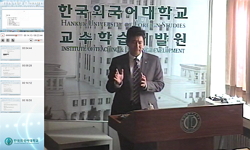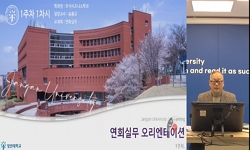This article studies two women communities in Paradise written by Toni Morrison and Park-ssi-jeon, a Korean ancient novel in perspective of comparative literature. They have common things. First, the women established their own communities, “convent...
http://chineseinput.net/에서 pinyin(병음)방식으로 중국어를 변환할 수 있습니다.
변환된 중국어를 복사하여 사용하시면 됩니다.
- 中文 을 입력하시려면 zhongwen을 입력하시고 space를누르시면됩니다.
- 北京 을 입력하시려면 beijing을 입력하시고 space를 누르시면 됩니다.

시대와 지역을 가로지르는 여성 낙원: 『파라다이스』와 『박씨전』을 중심으로 = Women Paradise Across Time and Regions: Paradise and Park-ssi-jeon.
한글로보기부가정보
다국어 초록 (Multilingual Abstract)
This article studies two women communities in Paradise written by Toni Morrison and Park-ssi-jeon, a Korean ancient novel in perspective of comparative literature. They have common things. First, the women established their own communities, “convent” in Paradise and PiWhaDang in Park-ssi-jeon due to the pressure on their bodies by patriarchy. Second, the two communities not only heal the members but also offer energy for new lives. In the process, the communities function fantastic places. Additionally, although the two places choose voluntary isolation at first, they spread the aspects of paradise to their neighbor women, even to those who are in the enemy groups as time goes by. They have limits, however, which means that the members of “convent” are so obsessed with the role of a mother who cares for others that the convent can be said to be an ‘imperfect women paradise’. Park-ssi, the protagonist in Park-ssi-jeon, takes too much compromising attitude for patriarchy, and as a result, the Pihwadang stays in a ‘temporary paradise for women’. In conclusion, in spite of the limitations of the communities, the two spaces are not just women's communities, but women's paradise across times and regions.
동일학술지(권/호) 다른 논문
-
Unveiling Mariana’s Inner Mind: Alfred Lord Tennyson and Julia Margaret Cameron
- 한국영미어문학회
- 김정숙
- 2022
- KCI등재
-
Graphic Deconstruction of Spatially Marked Race in Miné Okubo's Citizen 13660
- 한국영미어문학회
- 신이현
- 2022
- KCI등재
-
폭력에 저항하기: 『처음에 심장이 사라졌을 때는 텅 빈 것 같았지만 이제 괜찮아요』와 『렐라와 동료들』에 재현된 스토리텔링의 정치학
- 한국영미어문학회
- 김영덕
- 2022
- KCI등재
-
한국 중등학생의 영어 통사구조 인식 분석: 부정극어를 중심으로
- 한국영미어문학회
- 김보경
- 2022
- KCI등재





 KCI
KCI







